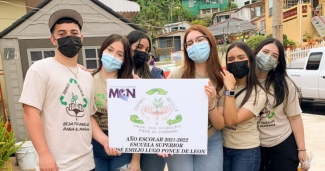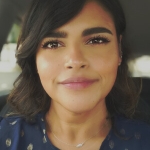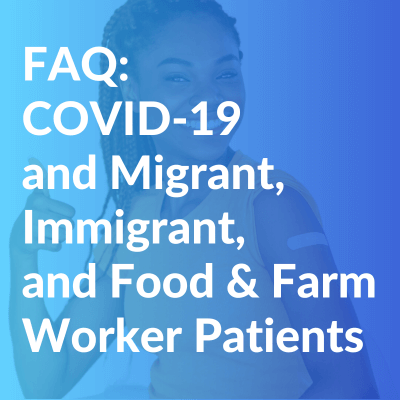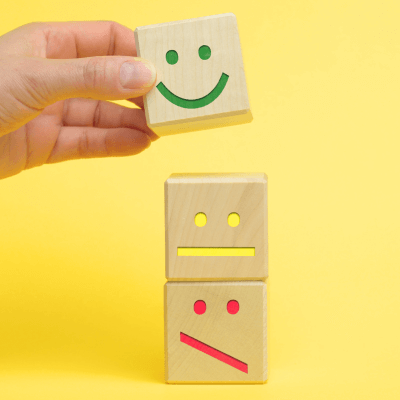Environmental Stewardship: Developing Young Conservation & Emergency Management Community Leaders at School
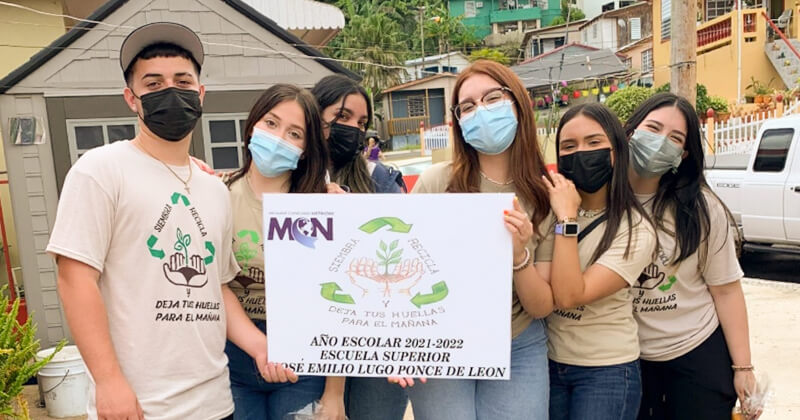
(Community impact by students from the Jose Emilio Lugo School at Adjuntas)
[Editor’s Note: June 1st marked the beginning of hurricane season. In Puerto Rico, Migrant Clinicians Network engages numerous community partners and industries to build hyper-local emergency preparedness that engages the entire community and ensures that the most marginalized in a community are not left out. This month, we highlight some of the incredible work that MCN’s Puerto Rico team has accomplished during the pandemic, and how their work builds preparedness and resilience, for the next crisis. You can read the first part of this three-part blog series here.]
Hurricane María is regularly referenced, five years after its terrible arrival in Puerto Rico. That’s because the devastating hurricane revealed deep and gross failures across systems, infrastructure, and frameworks that sustained our society. As the very fabric of our way of living was torn apart, entire communities organized themselves and mobilized following a weak local and federal government response to their needs. Across the island, we saw medical personnel providing free services to anyone who needed them, food being given away to entire communities that were cooked by abuelitas, chefs, or other caring members of the community, and even daycare for children whose parents needed to stand in lines for hours to find essential items for their family's survival. After a couple of months, normal day-to-day activities resumed, including in-person school, for those who had the opportunity. Able teachers, children, and school personnel reunited to share their experiences. The classroom became a space to process our new reality and to learn about the events that led us to it. Our youth were educated on hurricanes, how their community’s environment would be restored, resilience, and hope. A project by Jan de la Paz, a Spanish teacher in San Juan, encouraged empathy among students while stimulating their learning with innovative technology to create short documentaries with the narration of their peers’ experiences during the hurricane. Schools around the island became not only a place of refuge for the vulnerable during emergencies but also a place to heal and grow in the aftermath. However, a curriculum that brings in environmental education has not been widely integrated. Environmental education, a process allowing individuals to explore environmental issues, engage in problem solving, and take action to improve the environment, is needed to develop a deeper understanding of environmental issues and to gain the skills to make informed and responsible decisions regarding a healthy environment to ensure a healthy community. In an effort to address disaster preparedness as it relates to environmental protection and human health in vulnerable communities, Migrant Clinicians Network (MCN) developed an environmental education curriculum to be integrated in schools located in Puerto Rico’s mountainous region.
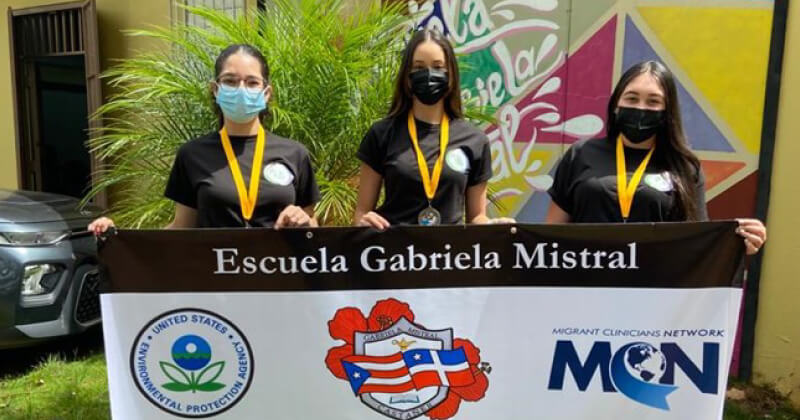
(Gabriela Mistral School students at Castañer representing the environmental education projects)
The overarching goals of MCN's environmental education program were:
1) to develop young environmental stewards who would participate in engaging their community to think critically about environmental issues and associated decisions that affect human health and the environment as it relates to disaster preparedness and response;
2) to increase public education in order to improve protection of human health and the environment as it relates to disaster preparedness and response; and
3) to ensure chemical safety and safe water as it relates to disaster preparedness and response.
Our partnership with Hospital General Castañer, a local community health center, with the support of the Environmental Protection Agency (EPA), allowed us to identify four schools in this largely agricultural region located in the heart of the island. In addition to spending entire months without electricity, losing crops, and suffering environmental destruction, they experienced a lack of access to drinking water and post-hurricane environmental contamination that will last years after the passing of the climate-fueled phenomenon. In response to their situation, we created a curriculum focusing on chemical safety and access to safe, clean water during emergencies and disasters that included varied educational approaches such as hands-on observation and discovery in the environment, inquiry, cooperative learning, case studies, and problem-based and project-based learning. School principals, health teachers, and science teachers from the selected four schools received a workshop on the curriculum and its integration, and a sub-award that would be useful to acquire materials for all project activities. We also scheduled learning collaboratives to continue all collaborators’ engagement to share experiences, challenges, best practices, and ideas while the curriculum was being integrated. Just as we completed the curriculum's creation and training, and moved to work on its implementation, COVID-19 arrived in Puerto Rico.
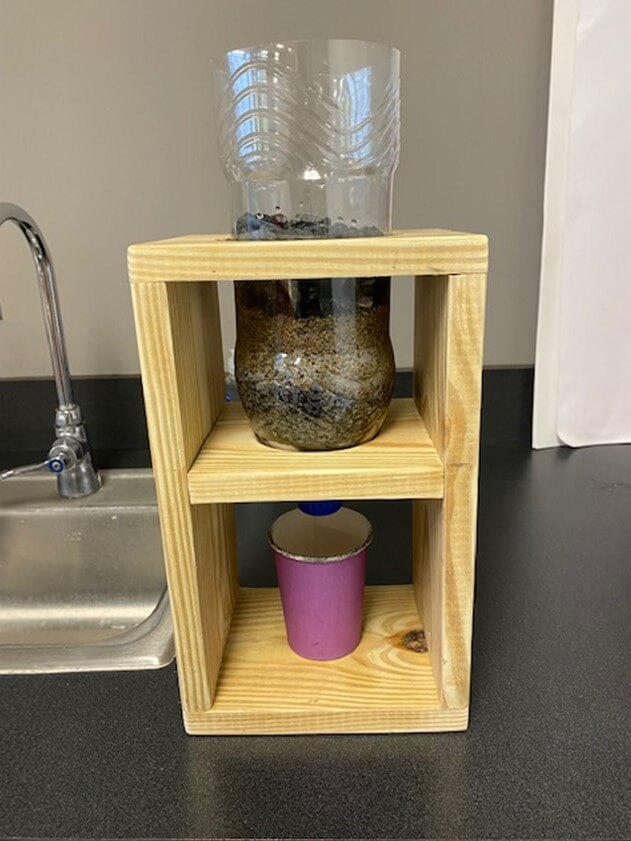
(Water filter created by students of Hector I. Rivera Irizarry School at Adjuntas)
As the COVID-19 pandemic shifted our way of living, great uncertainty arose in the educational sector. This environmental education project, filled with opportunities for experiences in and out of the classroom, had to adapt to the fast-paced changes our new reality brought along. The educators from our partner schools -- Rafael Aparicio Jiménez School, José Emilio Lugo School, Gabriela Mistral School, and Héctor I. Rivera Irizarry School -- faced the challenges of carrying out an environmental education project while educating virtually or in hybrid mode, and two of them were functioning under interlocking schedules. When schools have interlocking schedules, it means that one structure is used by different students and school personnel at different times. In this case, the Héctor I. Rivera Irizarry School suffered structural damage from earthquakes that occurred a month before the pandemic – another emergency that Puerto Rico has worked through in recent years -- and could not receive students and personnel safely. They were instructed to share the Rafael Aparicio Jiménez School building in an interlocking schedule to continue providing services. Interlocking has a significant impact on class periods, classroom space usage, and other hardships for students and teachers alike. The educators demonstrated their creativity and resilience using technology, presentations, and learning activities students could do at home. Our learning collaboratives also provided a space for teachers to share their challenges with the pandemic in the classroom while implementing this project. When they were back to an in-person learning experience, teachers inspired students to become environmental stewards by providing experiences in school gardens, planting trees in forests like the local community forest named Bosque 4 Pueblos, creating water filters with simple materials, and learning how to stay healthy when threatened with exposure to dangerous chemicals after disasters due to non-point source pollution.
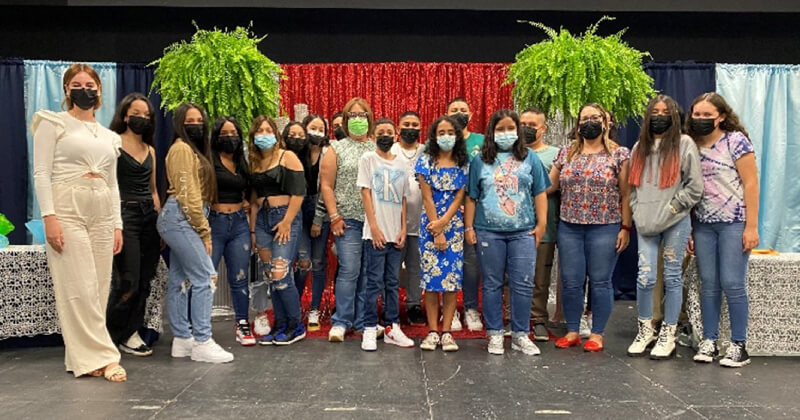
(Students, teachers and MCN representatives celebrating the success of the environmental education project at the Rafael Aparicio Jiménez School in Adjuntas)
Teachers received technical assistance from MCN and Hospital General Castañer, from the project implementation in 2021 through its completion this month. The community outreach team from Hospital General Castañer has been key to support teachers through interventions related to leadership, the environment, and health, among other subjects. Over the course of project, which is now drawing to a close, schools took their classroom-based projects on water and chemical safety during disasters to their communities, by sharing brochures, exhibitions, and other materials with the community. Students have also educated their younger peers after a train-the-trainer activity provided by their teachers equipped them to teach others. This project impacted BIPOC, low-income, Spanish-speaking communities in isolated, underserved areas reaching at least eight teachers, 160 students, six community leaders, and 11 outreach workers from the community health center. However, the ripple effect of this project is far greater, reaching hundreds of community members to increase their understanding of the benefits of and participation in environmental and conservation stewardship through community collaboration in disaster preparedness as related to human health and environmental protection.
Due to COVID-19, the participant schools were not able to carry out an Environmental Summit in Adjuntas as a way to collectively impact the community and celebrate their efforts in this project. However, we want to recognize the efforts of all teachers, students, and collaborators in a special video, coming up in August: stay tuned on social media!
MCN’s Puerto Rico team has its own Twitter account. Follow them here: https://twitter.com/PR_MCN.
Resources
Educacíon ambiental:
Got some good news to share? Contact us on our social media pages above.
Return to the main blog page or sign up for blog updates here.
- Log in to post comments
